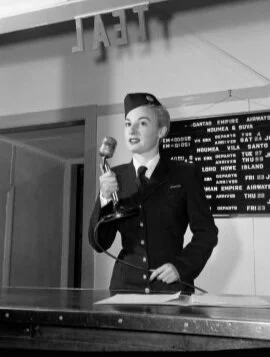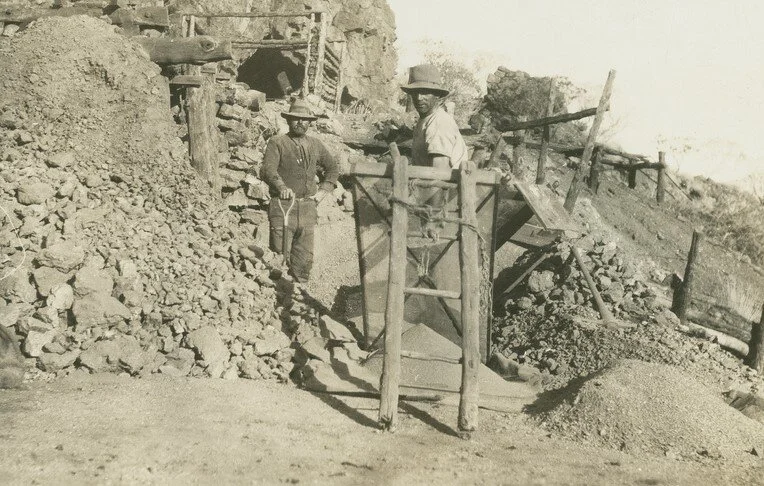Capital history in the news
The Palace Letters
The Palace Letters are a series of letters exchanged between Governor-General Sir John Kerr and Buckingham Palace during Kerr’s time in office. The 212 letters were written between 15 August 1974 and 5 December 1977. They were released on 14 July 2020 in line with a High Court ruling of 29 May 2020 that the letters were Commonwealth records not private correspondence. Here is a small selection of the many articles that were written about the Palace Letters after their release. No doubt there will be more written about them as historians have more time to examine them.
There was more to the Palace letters than just the Dismissal. Here is what you might have missed | This article covers insights from the Palace Letters that are about some of the more eccentric issues and discussions that were occurring during Australia’s most politically turbulent years.
The big reveal: Jenny Hocking on what the ‘palace letters’ may tell us, finally, about The Dismissal | On the day of the Palace Letters’ release historian Jenny Hocking reviews the Palace Letters – what we know about them, what to look out for, and what they might tell us. She concludes that whatever the Palace Letters may reveal, the most important thing is that now we can know it. With that knowledge, the full history of the dismissal of the Whitlam government can finally be told.
Letters of an insecure and indiscreet John Kerr make a mockery of the claim that the Queen played ‘no part’ | Another article by Jenny Hocking. In this she argues that the Palace Letters show the Queen’s private secretary Sir Martin Charteris and Sir John Kerr failed to consider they had a fundamental duty, to act on the advice of the elected government, specifically the Prime Minister.
Canberra’s aero heritage
Qantas Boeing 747 aircraft takes farewell tour over Canberra, Brisbane, and Sydney | Qantas's last Boeing 747 flew over Canberra on Friday 17 July giving admirers on board one more view over the national capital. The Qantas flagship since the first jumbo jet was bought in 1971, the planes were grounded in the wake of COVID-19, and then decommissioned.
Dickson site of Canberra's first plane crash steps closer to heritage listing | A nomination to place remnants of Canberra’s first aerodrome, the site of the city’s first plane crash, on the ACT’s heritage register has been accepted for consideration.
The Nursery, Black Mountain and before the Lake
What Canberra's Lake Burley Griffin replaced — cows, racecourses, and Springbank Homestead | This story was about what existed in central Canberra before Lake Burley Griffin was created. Capital history here's own Rohan Goyne contributed to this story talking about his ancestors, the Sullivans, who lived at Springbank (now Springbank Island) 130 years ago and noting that aboriginals have lived in this area for 25,000 years. Also featured Mrs Christine Anderson the last surviving member of the Kaye family who lived at Springbank prior to the flooding of the basin. Dr Kirsty Guster’s Sunken Stories project which explored the history of Old Acton is covered as well.
Black Mountains secrets revealed |Tim the Yowie Man writes about the secrets of Black Mountain on its 50th anniversary. Note, it became a conservation reserve on 23 July 1970. Tim draws attention to Black Mountain: a natural history of a Canberra icon which has been published by Friends of Black Mountain to commemorate the 50th anniversary.
Yarralumla nursery helped shape bush capital |Archives ACT writes about Canberra’s Yarralumla Nursery which it is said made the national capital a garden city and put the bush in the “bush capital”. The Nursery’s role in the development of Canberra can be seen in the cards and ledgers used to record its day-to-day work. These have been digitised for the years up to 1996 and can be seen here.
Your heritage council needs you
Join the ACT Heritage Council in 2021 | Registrations are now open for expressions of interest to join the ACT Heritage Council. Expressions of interest need to be submitted using the application form available at www.environment.act.gov.au/heritage or by calling Access Canberra on 13 22 81. The closing date for applications is 14 August 2020.
War and Peace
Making plans to remember the resourceful Rats | ACT Rat of Tobruk John Flemming, aged 101, still has vivid memories of the siege of Tobruk. April 2021 will mark the 80th anniversary of the siege with planning in the works for a “world reunion” of veterans and descendants in Brisbane. Commemorative roses have recently been planted in Eddison Park, Woden by the Descendants of the Rats of Tobruk Association, so the flowers will be in bloom in time for the anniversary.
A pocket of peace in Canberra | Archives ACT writes about records that have now been opened that can explain the connection between Canberra’s sister city agreement with Nara in Japan and the construction and opening of the Canberra Nara Peace Park in 1999.
Library, Museum and Archive news
Reopening Update: August 2020 | On 3 August the National Library of Australia’s Treasures Gallery and Exhibition Gallery re-opened. Also a new exhibition, Australian Dreams: Picturing Our Built World, explores how artists have documented, interpreted, and celebrated a variety of buildings through image. Entry is free. No bookings required.
'There's no way we can save it all': National Archives says audio-visual records will be lost | The National Archives of Australia is preparing to lose large sections of 117,000 hours of magnetic tape archives as they will be lost if not digitised by 2025. Planning is underway to prioritise records for preservation with records relating to Indigenous languages and culture given the highest priority.
In the 1930s and 40s Queensland, Meandering Martha was a tiny lifeline for the rural women of Queensland | Emily Catt a researcher at the National Archives of Australia writes about the records of the ABC radio show Women’s Hour compered by Rita Humfress in the 1930’s and 1940’s. The files of recipes and housekeeping tips were much more than simple advice. Instead they ‘mark tiny lifelines between Miss Humfress’ microphone and the women of rural Queensland.’
A new space to explore NFSA stories | Hive is a new interactive public space opening at the National Film and Sound Archive from 1 August 2020. Open from 10.00am – 4.00pm daily. No bookings required. The centrepiece of Hive is a new interactive display titled Storywall, which features a life-size projection of six NFSA experts who will tell a story about themselves and their passion for Australia's audio visual history, as well as digitally showcasing items from the NFSA collection.
70 year-old toy koala; a symbol of the gift of immigration | Museum of Australian Democracy Old Parliament House writes about one of their special museum objects, a toy koala that was given to six-year-old Isobel Saxelby on her arrival to Australia in 1949. The toy was presented to Isobel by Australia’s first minister for Immigration, Arthur Calwell as she was Australia’s 100,000th British migrant.
Indigenous history news
Oak Hill scarred trees back where they belong | Note: this story includes an image of a deceased Indigenous person. In the name of reconciliation, Yass Valley Council worked with its Aboriginal Consultative Committee to restore scarred trees (illegally cut down in 2004) in an interpretative display at Oak Hill. An official opening of the scarred tree installation will be held sometime between 8-16 November, during NAIDOC Week, which has been postponed due to COVID-19.
Other news
Brando’s atoll was holiday getaway for Tahitian royalty | The Teti'aora project (a collaboration between the Australian National University, the International Centre for Polynesian Archaeological Research and the Teti'aroa Society) has found strong evidence the tiny Pacific atoll of Teti'aroa, once owned by Hollywood icon Marlon Brando, was the exclusive preserve of the Tahitian royal family in the 18th century.
Inspiration from beyond Koorabri | Matthew Higgins writes about Gwen Meredith who wrote the famous Blue Hills radio series. It was believed she wrote the series at her cabin at Koorabri on the glorious Goodradigbee River, upstream of Brindabella. However, Matthew resolved from his research that she drew inspiration from various places and journeys.
Acknowledgement: The image above is inspired by Qantas's Boeing 747 flyover on 17 July 2020. It is of a Qantas ground hostess at Rose Bay, Sydney. This is one of a series of photographs taken in about 1950 by Max Dupain. This image comes from the State Library of NSW. Full details here.
Please share. Let’s get the past and present talking.





